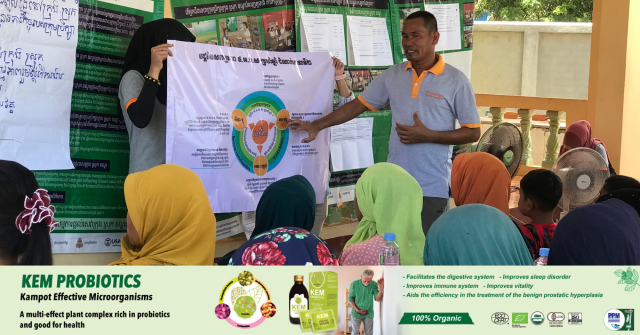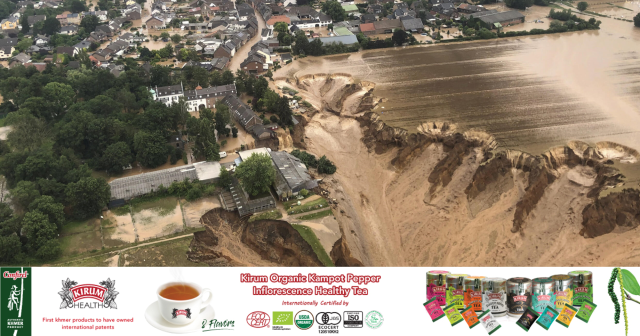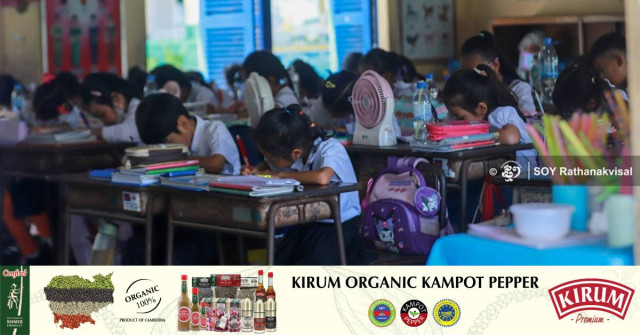Cambodia: For Women Farmers, Solar Power Brings Much More Than Electricity
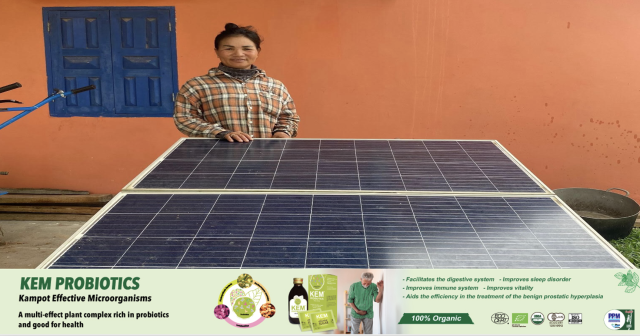
- By Chan Muyhong
- November 26, 2023 9:28 AM
TAKEO, Cambodia--“As long as the sun is up, there is always power to irrigate the curly wrap bok choy,” said Duk Da, a farmer who has been using a solar-powered, portable water pump to irrigate her rice fields and vegetable plots in Trapeangchok village here in Takeo province, some 100 kilometres south of Cambodia’s capital, Phnom Penh.
“I heard of solar being used in the home, for instance to light up the house, but not for pumping water, so I was intrigued. I wanted to try,” said another small-scale woman farmer, Mang Oun, who also grows bok choy and other vegetables. “My body (now) aches less,” said 49-year-old widow, the breadwinner for her three children. “Farming has become less difficult and physical for me.”
Like other smallholder farmers in Cambodia, Duk Da and Mang Oun use local ways of watering their crops in the dry season, when there is little rainfall for their crops. Farmers in their community usually pump water from home ponds, where they collect water to use in rice fields or net houses for growing vegetables. The pumps they use are usually powered by a diesel-fired generator or by electricity, through outlets in the farmers’ homes that are connected to the national electricity grid.
Before switching to using solar-powered pumps through a United Nations project in 2021, Duk Da and Mang Oun were using diesel fuel-powered generators, which easily weighed over 20 kilogrammes, to run their pumps.
The generator that Duk Da operated with her husband Samrith help allowed them to pump water, through a PVC pipe, from the 1,500-square metre pond in their home lot to their vegetable garden. As for Mang Oun, she had to drive the generator to the farm plots in a 2,000-sq m land she owned at the time, some 10 km away from home, when irrigation time came.
_1700955118.png)
Duk Da, 52, recalled: “We had to carry the pipes, water row by row, and stand there to monitor the water to ensure the curly wrap bok choy gets just enough water.” For their 600-sq m vegetable garden, this task took more than three hours each morning.
After their village got connected to the national power grid in 2016, Duk Da and Samrith switched to plugging their generator to the electric outlets at home. But their power bills grew too, and irrigation still took a lot of time and physical labour. In this situation, farmers had little room to think of cultivating more land, or expanding their businesses.
‘NOT THE SAME (WEATHER) PATTERNS’
Over the past decade or so, smallholder farmers have also been dealing with another challenge — unfamiliar weather trends in a changing climate. Erratic and or delayed rainfall and more drought episodes make it harder to know the time to start planting rice – usually when the rains start in May.
Mang Oun said, “The dry and the rainy seasons do not follow the same pattern any more. For us farmers, too dry or too wet weather is not good.” Duk Da agreed: “In the past ten years, I’m always worried if the rain in the rainy season will be delayed or not.”
Their observations echo what many reports about Cambodia’s climate outlook and impacts say. Heatwaves, drought and floods, apart from cyclones and storm surges, are among the climate-related hazards that the country has been experiencing.
“Projected climate change trends indicate more severe floods and droughts, which is expected to affect Cambodia’s GDP by nearly 10% by 2050,” said the Climate Risk Country Profile for Cambodia, published by the World Bank and Asian Development Bank.
Major adaptation efforts are needed “to manage loss of yields due to the projected increases in the incidence of extreme heat during the growing season of staple crops such as rice, particularly for poorer communities operating at subsistence level and reliant upon rain-fed agriculture,” it added.
“When you cannot predict when it is going to rain, it is harder to know when it is good to start sowing rice seeds in the fields,” explained Mang Oun, who also looks after a one-hectare home lot.
Drier weather is good for growing vegetables, Duk Da explains, but extreme heat and too many dry episodes spell trouble. “In 2013 and 2014, it was so dry that even the water in the pond [in her home lot]. When that happened, I couldn’t grow any crop,” she said.
“I am worried about droughts in the future. I would have to reduce vegetable cultivation if water in the pond dries up. That would mean no income for the family,” Duk Da continued.
Yet, she said, “At times when it rains, it rains really hard so that the soil becomes too wet to grow any vegetables. At times, it also destroyed the vegetables.”
This year, Mang Oun says, farmers were advised to store water ahead of an expected dry spell in late October, still in the monsoon season. “But it turned out that it rained quite a lot last week. The rains brought khyol kantrak (wind gusts), which destroyed some farmer’s net houses, including mine,” she said.
The solar-powered water pumps from the UN’s EmPower: Women for Climate Resilient Societies project, therefore, give women farmers access to irrigation in weather-unpredictable times — and much more. Run by UN Women and the UN Environment Programme (UNEP), EmPower aims to help make women farmers more resilient in managing agricultural businesses in a changing climate, and less reliant on fossil-fuel energy sources.
These goals intersect in the major role that women play in agriculture and the informal economy in Cambodia, a country of nearly 17 million people. A quarter of its GDP comes from agriculture and fisheries, which employ nearly half of the labour force.
_1700958390.png)
Women farmers accounted for 39% of female employment in 2020, World Bank data show. Cambodia’s women typically work in informal sector, and thus have more limited access to credit.
“We see them as leaders, that is how we engage them in the process of climate resilience through the use of renewable energy,” said Parimita Mohanty, UNEP programme manager and renewable energy specialist.
“The majority of women's participation is in agriculture. The sector is so climate dependent,” said Rotvatey Sovann, programme officer for EmPower at UN Women. “If we can have interventions and focus on women farmers and improve their economic productivity, as well as give them a kind of solution which would address those kinds of climate change impact, it can create a larger impact on a country scale in the future.”
The solar pump sets are small-scale in terms of power, says Mohanty. “But they bring lots of benefits in terms of time saved, in terms of making the quality of the products better, in terms of providing profit to women, in terms of giving solutions for addressing climate change problems,” she said.
Cambodia, along with Vietnam and Bangladesh, is in the pilot phase of the EmPower project, which is to be expanded to the Philippines and Indonesia.
Some farmers were hesitant to switch to using solar power for their water pumps, recalls Kim Oun, another woman farmer who, along with her husband, was the first to purchase solar panels in a nearby village, Kolkhorm village, some two years ago. “I did not dare to invest in solar because I never used it before,” she said, but went for it when the project subsidy rose to 80 percent. “In my village, no one dared to invest in the solar,” recalled the 64-year-old farmer.
Some farmers did not see the need to switch to solar because having access to the national power grid already made irrigation much easier, Duk Da adds.
‘JUST TURN THE SWITCH ON’
These days, Duk Da and her husband take turns in doing irrigation duties. “To water the spinach, I just turn the switch (of the solar module) on, leave it on for 10 minutes, then switch it off,” she said. "I do this once in the morning and one more time in the evening. I have more time for the family or tend to other crops or do other things I want to do.”
Apart from now having the time to cook lunch earlier and have an hour’s rest by 1 pm - Duk Da has also been able harvest rice twice a year, instead of once. This has meant additional income and food for the family.
Before buying her portable solar-powered pump under the EmPower project in 2021, Mang Oun recalled, “I would have to carry the diesel generator from my home to the (2,000 sq m) plot once every week to water the corn for two to two and a half months until harvest.”
She now does irrigation twice a day, for 30 minutes each time. “The portable solar battery, I can just carry it with me. It is very light. As a woman, I can do it alone without the need for a man to help me,” Mang Oun said.
The women farmers’ homes have solar photovoltaic panels, which are used to charge the batteries of the water pumps.
Duk Da paid 300 US dollars, or 20 percent of the total cost, for her 670-watt solar-powered water pump system. Mang Oun got a 230-watt portable pump with a solar-chargeable battery for over 260 dollars, helped by a 50 percent project subsidy.
The two farmers have been able to cut their expenses either for buying diesel fuel for the generator or paying for electricity to run it. This saved them about a dollar a day in diesel purchases diesel or 30,000 riel (7.5 dollars) a month for electricity. Kim Oun says her savings are 140,000 riel (35 dollars) a month.
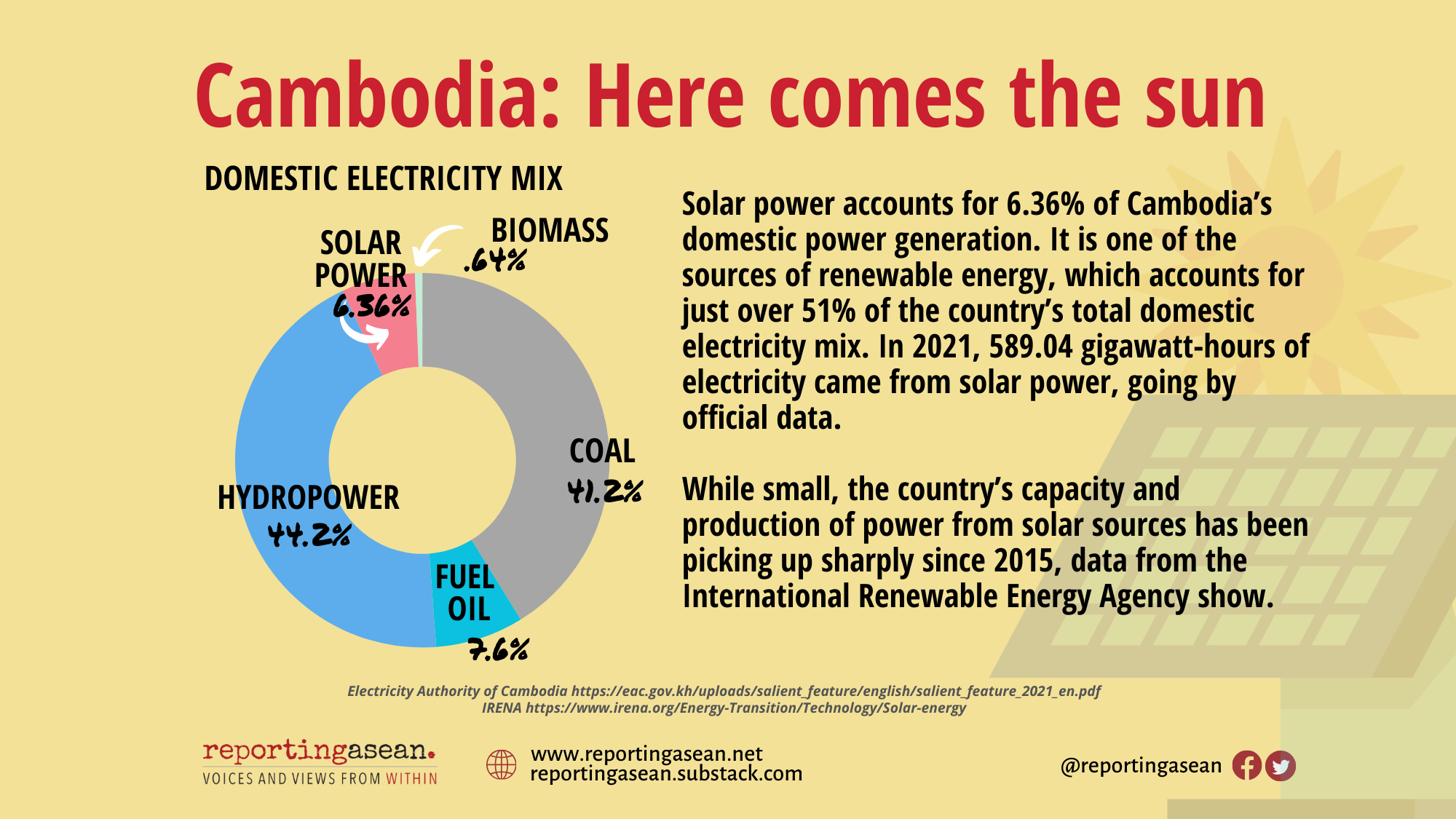
All three have been able to install more net houses and grow more vegetables.
Duk Da worries about needing a second subsidy to help her invest in batteries that can store electricity when the sun goes down. Mang Oun says her portable pump’s battery has broken down thrice, and is unsure about the cost of a replacement.
But the women say their solar tools have already changed their lives.
“I invested in solar once, and I never have to pay again,” said Kim Oun. She and her husband now divide the tasks of irrigation, harvesting, and packaging the Chinese spinach they grow.
“I was told that using solar can help reduce the warming (of the planet). If we use electricity, it will cause the temperature to continue rising,” Duk Da said. “I agree with this.”












